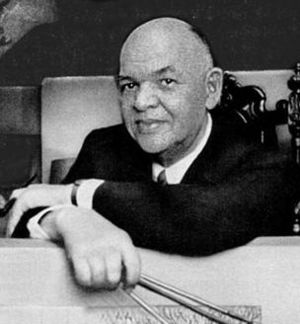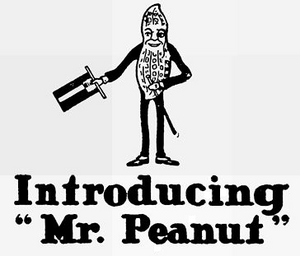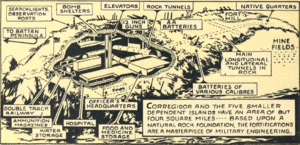E. C. Stoner facts for kids
Quick facts for kids
E.C. Stoner
|
|
|---|---|

A photo of Stoner from his time as a spokesperson for Gordon's Gin
|
|
| Born |
Elmer Cecil Stoner
October 20, 1897 |
| Died | December 16, 1969 (aged 72) |
| Nationality | American |
| Alma mater | Pennsylvania Academy of Fine Arts |
| Awards | Artist Laureate of Pennsylvania Outstanding Son of Pennsylvania (1950) Prix de Rome From Pennsylvania Academy of Fine Arts Packard Prize Cresson Traveling Scholarship |

Elmer Cecil Stoner (born October 20, 1897 – died December 16, 1969) was an American comics artist and commercial illustrator. He was one of the first African-American comic book artists. Many people believe he created the famous Mr. Peanut mascot.
Stoner drew for the first issue of Detective Comics, which was published by National Comics Publications (the company that later became DC Comics). He also worked for many other companies during the Golden Age of Comic Books, like Timely Comics, Street & Smith, EC Comics, Fawcett Comics, and Dell Comics. Later in his life, Stoner also became a spokesperson for Gordon's Gin.
Contents
Early Life and Art Training
Stoner was born on October 20, 1897, in Wilkes-Barre, Pennsylvania. His mother was a pianist, and his father worked at a church. Stoner was the oldest of three children in his family.
He left school at age 11, which was common in coal mining towns like Wilkes-Barre. Instead of working in the mines, Stoner got a job at a Woolworth's store. The founder of Woolworth's, Fred Morgan Kirby, helped him get the job. While working there, Stoner learned about sign-painting, lettering, and advertising. Soon, he started working as a freelance artist in his hometown.
Creating Mr. Peanut
In 1916, the Planters company held a contest to create a mascot. A 14-year-old boy named Antonio Gentile won the contest. According to Planters, a "professional illustrator" then improved Gentile's drawing. This artist added the top hat, monocle, and cane to create the Mr. Peanut we know today.
Planters never officially said who this artist was. However, Stoner's wife, Henriette, said that creating Mr. Peanut was one of Stoner's achievements. She mentioned this when filling out a questionnaire for a book about comic book artists.
Art School and Moving to Harlem
In 1918, Stoner registered for military service but was not called to serve because he was in school. He attended the Pennsylvania Academy of the Fine Arts, an art school, possibly with help from Fred Morgan Kirby.
While at art school, Stoner won several important awards. These included the Packard Prize for animal sketches, a Cresson Traveling Scholarship (which allowed him to travel and study art), and the Prix de Rome, a very prestigious art award.
Around 1922, Stoner moved to Harlem, a famous neighborhood in New York City. His artwork was shown in an exhibition at the Harlem branch of the New York Public Library. The head librarian praised his work, saying it was "splendidly planned and executed."
Working in Magazines and Comics
Stoner's first major work as an illustrator was for a children's book called Mic Mac on the Track in 1930. During this time, he worked for Tower Magazines, which published magazines for women and children. These magazines were sold in Woolworth's stores.
When Tower Magazines closed in 1935, Stoner started working for himself as a freelance artist. He also began to move into the world of comic art. His first comic book work was a story in Detective Comics #1. This story, called Speed Saunders and the River Patrol, introduced the character Cyril "Speed" Saunders. Stoner drew the art for this story.
Comic Book Studios
After working on Detective Comics, Stoner moved between different comics "shops" or small studios. In these studios, artists would create comic art and then send it to publishers. Working in these shops helped Stoner, as it created a bit of distance between him and the publishers. This was important because Stoner was one of the first well-known Black cartoonists. Other early Black artists included Matt Baker and Alvin Hollingsworth.
From 1940 to 1944, Stoner worked for several comic companies:
- Timely Comics: He drew some early stories for Breeze Barton.
- Fawcett Comics: He worked on Spy Smasher.
- Street & Smith: He drew Ajax the Sun Man for their Doc Savage comic.
- Dell Comics: He mainly drew covers for comics like Popular and The Funnies. He also drew stories for their War Heroes and War Comics series.
Stoner also worked for Parents Magazine for a short time. He drew for their educational True Comics series from 1941 to 1942.
In 1946, he created a short comic series called Blackstone, Master Magician. This series ran for three issues and was later brought back for one issue by EC Comics. Even though the comic series was short, the EC Comics version was made into a radio show called Blackstone, the Magic Detective, which aired from 1948 to 1950. Stoner also illustrated a souvenir program for the famous magician Harry Blackstone Sr., who the series was named after.
Stoner left the comic book industry between 1951 and 1952. His last known comic work was an educational comic called Deadline: The Story Behind The Headline.
Later Life and Legacy
Outside of his art, Stoner was a talented pianist and supported the arts. He also owned the apartment building where he lived in New York City.
In the late 1960s, Stoner was featured in advertisements for Gordon's Gin. He was one of several important African-Americans in these ads.
E.C. Stoner passed away on December 16, 1969.
Works
| Company | Title | Years Worked | Ref |
|---|---|---|---|
| Syndicated | Rick Kane, Space Marshall | 1951 | |
| National Comics Publications | Speed Saunders (in Detective Comics) | 1937 | |
| Dell Comics | Popular Comics | 1940–1943 | |
| Dell Comics | Martan the Marvel Man | 1939–1941 | |
| Dell Comics | Phantasmo (in The Funnies and Large Feature Comic) | 1940–1942 | |
| Dell Comics | War Comics/War Stories | 1942–1944 | |
| Dell Comics | War Heroes | 1942–1944 | |
| EC Comics | Blackstone | 1947 | |
| Fox Comics | Blue Beetle | 1943–1945 | |
| Fox Comics | Bouncer | 1943–1945 | |
| Fox Comics | Green Mask | 1944–1946 | |
| Interfaith Publications | The Challenger | 1945 | |
| Timely Comics | Breeze Barton (in Daring Mystery Comics) | 1940 | |
| Timely Comics | Flexo (in Mystic Comics) | 1940 | |
| Street & Smith | Ajax the Sun Man (in Doc Savage) | 1941 | |
| Street & Smith | Blackstone (Vital Publications) | 1946 | |
| Street & Smith | Iron Munro in (Shadow Comics) | 1940–1941 |


